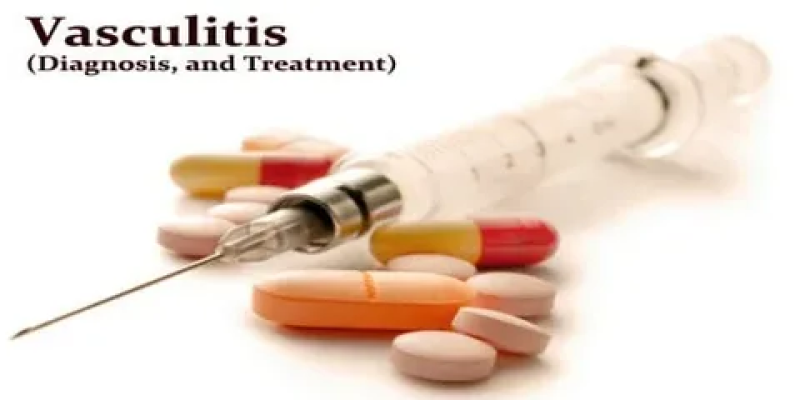Vasculitis represents a group of rare disorders characterized by inflammation of blood vessels, causing damage that can affect various organs and tissues in the body. The complexity of vasculitis lies in its diverse types and manifestations, requiring tailored treatment strategies. Over recent years, significant advancements in vasculitis treatment have emerged, driven by a deeper understanding of the disease’s underlying mechanisms and innovations in therapeutic options.
Understanding the Medical Management of Vasculitis and Its Challenges
The cornerstone of Vasculitis Treatment involves controlling and suppressing inflammation to prevent vessel damage and organ impairment. Standard initial therapies often include corticosteroids, which effectively reduce inflammation but may cause significant side effects with prolonged use. Immunosuppressive agents like cyclophosphamide, methotrexate, and azathioprine are commonly used adjunctively or as second-line options to maintain remission and minimize steroid exposure.
Treatment regimens are highly dependent on the specific type and severity of vasculitis, ranging from mild localized forms to life-threatening systemic involvement. For instance, in cases of granulomatosis with polyangiitis or microscopic polyangiitis, aggressive immunosuppression is often necessary. On the other hand, milder forms like cutaneous vasculitis may respond to less intensive therapies. The challenge in medical management is balancing efficacy with minimizing adverse effects, as aggressive immunosuppressive treatments can increase the risk of infections and other complications.
Emerging Biologic Therapies Revolutionizing Vasculitis Treatment Landscape
The advent of biologic agents has marked a significant milestone in vasculitis treatment, introducing targeted therapies that modulate specific immune pathways. Agents such as rituximab, a monoclonal antibody targeting CD20-positive B cells, have become increasingly integral for managing certain vasculitis types. Rituximab offers comparable efficacy to cyclophosphamide but with a potentially improved safety profile, making it a preferred option for some patient populations.
Furthermore, other biologics targeting components like interleukin pathways and complement factors are under active investigation and clinical use. These treatments provide new hope for patients with refractory or relapsing disease, often improving long-term outcomes. The integration of biologics into treatment protocols underscores an ongoing shift towards precision medicine, where therapies are better aligned with disease mechanisms and patient-specific factors.
Importance of Early Diagnosis and Personalized Treatment Strategies in Vasculitis
Early and accurate diagnosis of vasculitis plays a crucial role in optimizing treatment success and reducing irreversible organ damage. Due to the nonspecific symptoms and clinical overlap with other conditions, diagnostic delays are common and often detrimental. Advances in diagnostic imaging, serologic markers, and biopsy techniques have improved the ability to differentiate vasculitis subtypes and assess disease extent.
Personalized treatment strategies, guided by disease severity, organ involvement, and patient comorbidities, are increasingly emphasized in clinical practice. Regular monitoring of disease activity and therapeutic response is essential to adjust medications and prevent relapses. Multidisciplinary care involving rheumatologists, nephrologists, pulmonologists, and other specialists ensures comprehensive management tailored to individual patient needs.
Navigating Market Insights to Understand Vasculitis Treatment Trends and Innovations
The vasculitis treatment market is dynamic, with continuous innovation spurred by unmet clinical needs and advances in biomedical research. Detailed research reports on the latest treatment trends, drug pipeline developments, and competitive landscape analysis offer valuable knowledge for healthcare providers, pharmaceutical companies, and investors. Such reports provide in-depth data on emerging therapies, market opportunities, and regulatory progress that shape future treatment options.
Stakeholders seeking to explore these comprehensive market trends and strategic insights can access extensive analyzed data highlighting the evolving vasculitis therapeutics sector. This allows for informed decision-making on clinical and commercial fronts, fostering the development of novel treatments and facilitating their timely integration into healthcare.
Current Challenges and Future Directions in Vasculitis Therapy Development
Despite therapeutic advances, challenges remain in vasculitis treatment, including identifying precise biomarkers for disease activity, predicting relapses, and minimizing drug toxicity. Some vasculitis variants continue to be difficult to control, prompting ongoing research to uncover new drug targets and develop safer agents.
Ongoing clinical trials and translational studies aim to expand the repertoire of approved therapies, improve long-term patient outcomes, and possibly enable disease modification or cure in the future. Continuous investment in scientific research and collaborative efforts between researchers, clinicians, and industry are critical to overcoming these challenges.
Get This Report in Japanese Language: 血管炎の治療
Get This Report in Korean Language: 혈관염 치료
Read More Articles Related to this Industry- Recent developments in Epinephrine Industry
About Author:
Ravina Pandya, Content Writer, has a strong foothold in the market research industry. She specializes in writing well-researched articles from different industries, including food and beverages, information and technology, healthcare, chemical and materials, etc. (https://www.linkedin.com/in/ravina-pandya-1a3984191)
